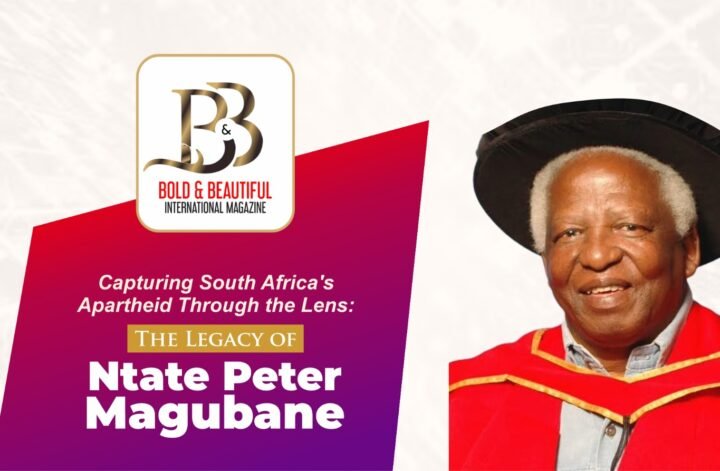In the annals of South Africa’s tumultuous history, few individuals have borne witness to its defining moments quite like Ntate Peter Magubane. Renowned as a preeminent photojournalist, Magubane’s lens has not only documented the harrowing realities of apartheid but also intimately captured the spirit of resistance and resilience embodied by Nelson Mandela. With each click of his camera, Magubane not only captured images but also etched the collective memory of a nation grappling with its past and striving for a better future.

Born in 1932 in the township of Vrededorp, Johannesburg, Magubane’s journey as a photographer began in the 1950s when he worked initially as a driver before experiencing purpose as a darkroom assistant at Drum Magazine. Armed with a keen eye and an unwavering commitment to truth-telling, he ventured into the heart of apartheid’s brutality, documenting the daily struggles and injustices faced by Black South Africans. His images, often smuggled out to the world despite censorship, served as a powerful indictment of apartheid’s dehumanizing regime against Black South Africans.

He was 16 years old when the white supremacist National Party came to power in 1948 and he came of age as the state introduced a series of repressive laws implementing the system of apartheid. Blacks were restricted to certain areas. Blacks were mandated to carry identification cards. Blacks were confined to learning particular language as directed by the supremacist party.

In 1969 Magubane spent 586 days in solitary confinement. In 1976 his home was burnt down. He miraculously survived being shot 17 times below the waist at the funeral of a student activist in Natalspruit in 1985. His son Charles was brutally murdered in Soweto in 1992.

However, it was his relationship with Nelson Mandela that would come to define much of his career. As Mandela’s personal photographer, Magubane bore witness to the moments of triumph and turmoil that marked Mandela’s journey from prisoner to president. From the iconic images of Mandela’s release from prison to intimate portraits capturing moments of solitude and reflection, Magubane’s photographs offer a poignant visual narrative of Mandela’s remarkable life.

Yet, Magubane’s work extended far beyond Mandela. He chronicled the pivotal moments of the struggle against apartheid, from the Soweto Uprising to the Truth and Reconciliation Commission hearings. His photographs not only captured the horrors of state violence but also the resilience of ordinary people fighting for justice and equality.

Despite facing harassment, imprisonment, and censorship by the apartheid regime, Magubane remained undeterred in his pursuit of truth. His photographs served as a beacon of hope for those oppressed by apartheid, shining a light on their struggles and resilience.

Today, Ntate Peter Magubane’s legacy endures as a testament to the power of photography to bear witness to history and inspire change. His images continue to serve as a reminder of the injustices of the past and the ongoing struggle for equality. As South Africa grapples with its complex legacy, Magubane’s photographs remain a timeless reminder of the resilience of the human spirit in the face of adversity.

He received numerous awards for his work, including the Robert Capa Award (1986), Lifetime Achievement Award from the Mother Jones Foundation (1997), the ICP Cornell Capa award (2010), and several honorary doctorates. He served as Nelson Mandela’s photographer from 1990 to 1994. In 1999, Magubane was awarded the Order of Meritorious Service by President Nelson Mandela




